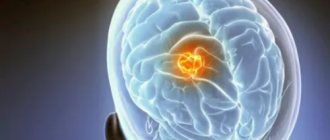Perceptual actions: what are they?
Perception, or perception, is a person’s ability to reflect surrounding objects and situations. Based on the data obtained in the process of perception, knowledge of the surrounding reality is carried out and an individual (subjective) understanding of it is formed.
Each person is unique, which is why human culture and art are so diverse. However, despite differences in perception, each person goes through certain stages in his development, which are accompanied by the implementation of specific actions. These actions were studied and called perceptual.
Perceptual actions are included in the structure of the perception process and the structure of human activity. Perception is an active process, so it is inextricably linked with activity. From a very early age, a person performs actions aimed at cognition and learning. After all, in order to live in this world, he needs to know this world and be able to interact with it.
Mechanisms of social perception
The perceptual side of communication consists of a set of tools, with their help a person can establish effective interaction with the interlocutor.
- Reflection is a person’s ability to introspect. With its help, a person can understand how the interlocutor sees him. As part of communication, it is important for us to know how we look in the eyes of our interlocutor, what impression we made on him, and how he perceives our words;
- Identification is a mechanism through which a person can put himself in the shoes of an interlocutor in order to form a view of a problem from a position. This makes it possible to fully or partially share the opinion of the interlocutor and his views;
- Empathy is the ability for genuine sympathy and empathy for another person, based on full understanding and acceptance of the experiences and inner world of the interlocutor;
- Attraction is a mechanism by which a preliminary attitude towards a person is formed. A positive mindset acts as a fundamental basis for creating effective and lasting communication. The attraction is built on common interests and values.
- Casual attribution is a mechanism by which a person can form ideas about the behavior and words of his interlocutors, based on his own assumptions and data obtained during observation.
Stages of formation and development
The formation of perceptual actions occurs during the learning process. Their development is divided into three stages.
At the first stage, the formation of perceptual action itself occurs, which begins with the child performing practical actions with unfamiliar objects. As a result, the formation of perceptual tasks occurs - the formation of an adequate image of an object, which subsequently becomes a sensory standard.
At the second stage, a restructuring of sensory processes (occurring in the sense organs) occurs, which become perceptual actions under the influence of practical activities. Actions are carried out with the help of receptor apparatus (tactile and visual), children become familiar with the spatial properties of objects.
At the third stage, the process of reducing and curtailing external actions occurs. They become hidden, occurring at the level of consciousness and subconscious. The external process of perception becomes an act of instantaneous discretion.
By this time, the child has formed a system of sensory standards (socially developed systems of sensory qualities, for example, a system of geometric shapes, etc.). Thanks to them, sensory-perceptual actions change. They turn from a process of image construction into a process of identification.
Functions of social perception
There are several main functions that are implemented within the perceptual side of communication:
- Development of mutual understanding. This function acts as a prerequisite for building productive communication between individuals. Having common interests, sharing the same values and beliefs is the foundation for benefiting from communication. It also makes it possible to find compromises in controversial situations;
- Development of emotional interaction. Feelings and emotions are an integral part of relationships. Positive feelings and emotions create sympathy, negative feelings and emotions lead to hostility.
- Formation of ideas about yourself. A participant in communication can obtain information about himself using conclusions obtained during dialogue with other people. As part of interaction with an interlocutor, a person can relay his attitudes and views on himself. As a result, a person can independently identify what was hidden in his consciousness.
- Formation of ideas about the interlocutor. This is manifested in understanding the views and worldview of people from the immediate social environment. In such conditions, a person can form a complete picture of the interlocutor. There are no alternative ways. Communication acts as the fundamental basis for any type of relationship;
- Organization of joint activities. If people entering into communication understand and accept each other, then this helps them conduct joint activities with a focus on quality results. Knowledge about the interlocutor makes it possible to build a strategy for communicating with him in any situation. Perception takes on a new meaning when it comes to communication on the scale of an entire social group. Productive joint activities can only occur if there is complete understanding and acceptance among group members.
Levels
Perceptual action can be divided into four levels:
- detection (characterized by the detection of a stimulus);
- discrimination (at this level perception occurs with the subsequent formation of a perceptual image);
- comparison or identification (at this level, the perceived object is identified with the image that is stored in memory; or several objects are compared);
- identification (the corresponding standard is extracted from memory and the object is categorized).
Game and development
Perceptual actions in preschoolers are a fruitful connection between the actions of orientation and exploration with the actions of execution. And the unity of visual and manual actions ensures the accuracy of perceptual analysis.
Children learn about the world around them through play. While playing, they actively process and assimilate new information. Thus, they accept social norms and rules for successful adaptation in society.
In preschool children, the following types of perceptual actions are distinguished:
- identification actions (object identification);
- actions in relation to the standard (comparing the properties of the object with the standard);
- modeling the actions of perception (by mastering productive activities, the child learns to create new objects: modeling, drawing, inventing).
Types of perception
In psychology, perceptual is associated with perception. Perceptual actions are actions aimed at sensory knowledge of the surrounding world. They can have a different character, depending on the type of perception. Experts distinguish three types of sensory knowledge of the surrounding world:
- cognition through vision;
- cognition through hearing;
- formation of a picture of the world using tactile sensations.
Self-control - what is it in psychology, definition
Knowing the leading type of sensory perception of the patient, the psychologist can easily find an individual approach to him. To do this, it is necessary to make maximum use of exactly that perceptual sphere to which a particular person is most sensitive, using exclusively auditory, visual or tactile stimuli and stimuli. This is not difficult to do; in modern practical psychology there are many ways to activate the work of various senses.
Interesting. People who are equally well developed in all types of sensory perception are extremely rare. Most often, one type is in the lead (for example, visual), other types fade into the background. A person who has no developed perception at all is also a very rare phenomenon.
Visual
A person who has a heightened visual perception of the world reacts especially vividly to any visual stimuli and irritants. As a rule, such people are interested in painting, love to look at pictures, have an excellent visual memory and remember people by their faces.
Auditory
A person who has the most developed auditory method of cognition of the world around him often has absolute pitch and easily reproduces any intonation he hears. Such people often connect their lives with music. The main disadvantage is increased sensitivity to loud and disharmonious sounds.
The perception of sounds plays an important role in the formation of a picture of the world
Tactile
There are people who, in order to remember information, must touch an object with their hands, feel it and remember their tactile sensations. In this case, we can talk about a heightened sense of touch. This type of perception develops especially strongly in early childhood, so exercises with children to improve fine motor skills have the most beneficial effect on memory and intelligence.
Perceptual systems
In the process of activity, a person constantly needs to solve some problems that require the perception of the most adequate reflection of the situation. Human perceptual systems are designed to solve these problems. These include:
- visual system;
- auditory;
- musculocutaneous;
- olfactory-gustatory;
- vestibular.
All of them provide the brain with the necessary information, which is used for the normal functioning and development of a person, both physically and mentally.
Human sensory-perceptual system
Sensory processes are sensations. A person constantly feels the influence of the external world on his body: he sees, hears, smells and tastes, feels tactile and temperature effects on his body. It also senses processes occurring inside the body: hunger, pain, excitement or weakness, etc.
The sensory-perceptual system is constantly developing and improving in the process of human life. This is necessary for a person’s successful adaptation to the outside world. A person’s abilities and capabilities depend on the quality of the perception system.
This is especially noticeable when compared with people who have disturbances in the development of perception. The life of a person with disabilities (blindness, deafness, muteness, etc.) differs from the life of an absolutely healthy person. Perceptual actions play a significant role here: the more minor the perception defect, the easier it is to correct and possibly correct it. This is done by specialists - defectologists.
Examples of social perception
Perceptual communication skills begin to develop from the first years of life, when the child begins to distinguish the facial expressions of his parents and recognize their emotions. The more complex the mechanisms of perception, the more factors a person perceives as part of communication with other people. With their help, he gets the opportunity to form a full impression of the interlocutor and his characteristics based on the information received.
If a person shows interest in a new acquaintance, he takes active steps to obtain as much information as possible about him through questions - this approach allows him to better understand his inner world and views. Perceptual communication significantly speeds up an individual’s adaptation to a new social group, because during the communication process a person conveys information about himself to others and receives feedback from other group members.
The importance of the perception system for humans
Scientists have been studying higher mental functions of humans (thinking, memory, voluntary action) for many years. The relationship between the system of perception and activity and the development of human thinking has been proven. In turn, thinking has a significant impact on a person’s condition, his abilities and capabilities. Perception is one of the highest mental functions of a person.
In order to live, a person needs to constantly reflect the surrounding reality and respond to the perceived information. Perception provides an individual and at the same time adequate reflection of reality. This is especially important for solving perceptual problems. Perceptual actions in the process of perception play an important role; they ensure the full development of the human psyche.
Simply put, to be healthy and happy, a person needs to be involved in some kind of activity. The brain is designed in such a way that it constantly needs to process and assimilate new information, otherwise it begins to become “lazy.” And a “lazy brain” is the first step to the development of dementia.
Manifestations in relationships with others
All people have different perceptual abilities. This depends, in part, on genetics and culture. This quality can also be developed, which is especially important for people whose work is related to communication and teaching. For example, the perceptual abilities of a teacher are the skills of observation, to find an individual approach to each student, regardless of his academic performance, character, or nationality. In relationships with others, perceptive individuals demonstrate a high level of empathy - emotional empathy for the interlocutor.
A person with a high level of development of sensory perception easily finds a common language with others
The influence of cultural and historical experience on a person
Modern people are so accustomed to freely receiving any information that they don’t even think about the fact that this is the result of the activities of a huge number of people. Their contribution to the development of modern society is enormous. Everything that a person can and knows is not only his merit, but also the property of society as a whole.
Perception is a system of perceptual actions, mastery of which occurs in the process of special training and practice. A child can master sensory standards only with the help of an adult who guides him and helps him identify the most significant features of objects and situations. This is very important for analyzing reality and systematizing the child’s personal sensory experience.
There are cases where children were deprived of communication with their own kind. These are the so-called “children of Mowgli”, raised by animals. Even after returning them to human society, it was rarely possible to adapt them to human society.
The concept of perception. Perceptual actions.
Perception (perceptual process) is a cognitive mental process that provides a holistic reflection of objects, situations and events that arises from the direct impact of physical stimuli on the senses.
The physiological basis of perception is the complex activity of analyzers.
Perception is based on sensations, but perception cannot be reduced to a simple sum of sensations. When perceiving, we not only identify a group of sensations and combine them into a single image, but also comprehend this image, drawing on past experience, i.e. perception is inextricably linked with memory and thinking. Thus, perception is involved in the reception of information and, together with sensations, provides sensory orientation in the surrounding world.
The process of perception occurs in close connection with other mental processes: thinking (we realize what is in front of us), speech (we designate an object with a word), memory, attention, will (we organize the process of perception), is guided by motivation, has an affective-emotional coloring (how - this is how we relate to what we perceive).
Perception is a more complex process than sensations. Perception is not a passive copying of an instantaneous impact, but a living, creative process of cognition, a complex activity, an important part of which is movement. If the eye is motionless, it stops seeing the object; to pronounce sounds, tension in the muscles of the larynx is necessary; to know the properties of the object, it must be examined - using hand movements.
There are 4 levels of perceptual action:
1) detection (is there a stimulus?);
2) discrimination (formation of a perceptual image of the standard) - these two actions are perceptual;
3) identification – identification of a perceived object with an image stored in memory;
4) recognition – assigning an object to a certain class of objects previously perceived; the last two actions are related to identification.
Thus, perception is a system of perceptual actions, the mastery of which requires special training and practice.
Perceptual actions are the basic structural units of the human perception process. They are associated with the conscious identification of one or another aspect of a sensory given situation, as well as various kinds of transformations of sensory information, leading to the creation of an image adequate to the tasks of the activity and the objective world.
Perceptual actions that serve to construct the same perceptual image can be realized using different sets of perceptual operations.
General properties of perception: objectivity, integrity, structure, constancy, meaningfulness, apperception.
Properties of perception. The most important properties of perception are objectivity, integrity, structure, constancy and meaningfulness.
The objectivity of perception is expressed in the so-called act of objectification, i.e. in relating information received from the outside world to this world. Without such reference, perception cannot perform its orienting and regulatory function in human practical activity. Objectivity of perception is not an innate quality; There is a certain system of actions that provides the subject with the discovery of the objectivity of the world.
Another feature of perception is its integrity. Unlike sensation, which reflects the individual properties of an object affecting the sense organ, perception is a holistic image of an object. Of course, this holistic image is formed on the basis of a generalization of knowledge about the individual properties and qualities of an object, obtained in the form of various sensations.
The integrity of perception is associated with its structure. Perception to a large extent does not correspond to our instantaneous sensations and is not a simple sum of them. We actually perceive a generalized structure abstracted from these sensations, which is formed over some time.
Constancy of perception. The property of constancy is explained by the fact that perception is a kind of self-regulating action that has a feedback mechanism and adapts to the characteristics of the perceived object and the conditions of its existence. The constancy of perception formed in the process of objective activity is a necessary condition for human life and activity. Thanks to the property of constancy, which consists in the ability of the perceptual system (the perceptual system is a set of analyzers that provide a given act of perception) to compensate for these changes, we perceive surrounding objects as relatively constant in shape, size, color, etc.
Meaningfulness of perception. Although perception arises as a result of the direct impact of a stimulus on receptors, perceptual images always have a certain semantic meaning. Human perception is closely connected with thinking, with understanding the essence of an object. To consciously perceive an object means to mentally name it, i.e. attribute the perceived object to a certain group, class of objects, and summarize it in words.
The dependence of perception on the content of a person’s mental life, his past experience, and the characteristics of his personality is called apperception. When we perceive an object, traces of past perceptions are also activated.
Does an adult have perceptual activity?
Since perceptual actions are actions of learning and cognition, it may seem that they are unique to childhood. However, this is not so: every time an adult learns something new (a hobby, a new profession, foreign languages, etc.), a system of perceptual actions is activated, which helps to quickly master new knowledge and skills.
Man is a unique creature, his possibilities are limitless, and all this is thanks to consciousness and psyche. It is they who distinguish man from all life on the planet. Only a person is capable of voluntarily regulating his activities in accordance with his desires. Human activity is not chaotic and unsystematic, but is part of the structure of consciousness and thinking. Until now, scientists all over the world are studying the human psyche, making new discoveries, but it still remains a mystery.










